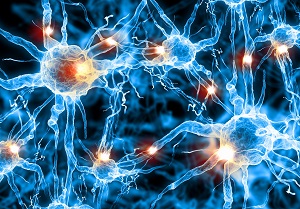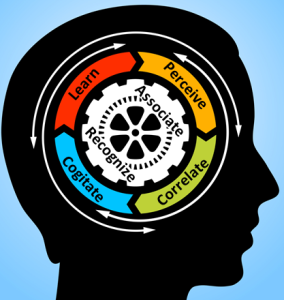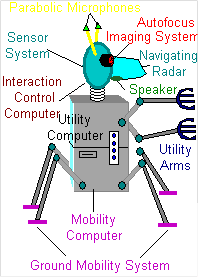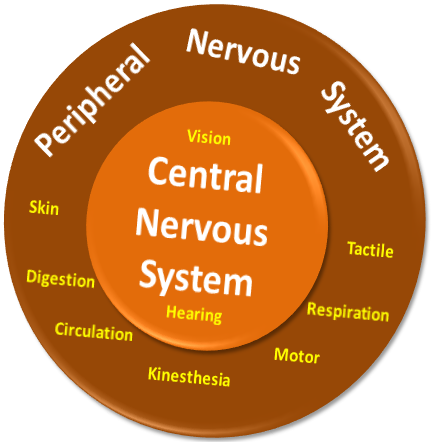26 Feb Physiology of Learning to Generalize
I began this blog heavily concentrating on the physiology of the brain, its cells and the way they interconnect. Learning and association are not dealt with much in those posts other than to describe ways in which the brain and its cells provide mechanisms for these activities. Many of the mechanisms of association are fairly clearly understood while learning is still largely a mystery. Sections 5 and 6 will also delve into this territory. Since there are different schools of thought, such as the nature versus nurture debate and implicit versus explicit representation camps, much of the material is open ended. If you feel inclined toward one viewpoint over another, be sure to dig into the reference material cited in the text. You will get a more complete view of the intellectual battlefield.
 We learn by building links, a process described in some detail in my posts on the biological network. The links may or may not be physically formed before the learning begins, but the links certainly become developed through learning. Where a link may have been “dormant” for years or even decades, the new association of a remembered concept stored in the brain may spark activity through the cobwebbed passage of a synapse. If there is follow-up activity across the same link (reinforcing feedback – see Hawkins 2004), the new link may become sufficiently energized to participate more fully in cognitive processes.
We learn by building links, a process described in some detail in my posts on the biological network. The links may or may not be physically formed before the learning begins, but the links certainly become developed through learning. Where a link may have been “dormant” for years or even decades, the new association of a remembered concept stored in the brain may spark activity through the cobwebbed passage of a synapse. If there is follow-up activity across the same link (reinforcing feedback – see Hawkins 2004), the new link may become sufficiently energized to participate more fully in cognitive processes.
| Understanding Context Cross-Reference |
|---|
| Click on these Links to other posts and glossary/bibliography references |
|
|
|
 Psychology of Learning
Psychology of Learning
In order to learn something, we must accept its existence. The proverb “seeing is believing” reaffirms the quasi-visual nature of comprehension; indeed, it is often easier to persuade us of the veracity of a thing or event if we have some real perceptual contact with it. How else do we come to believe things well enough to learn them? Many of us believe in the unseen, such as global climate change (as opposed to local climate variation we can perceive), atomic fusion, continental drift, God and miracles. This ability to project our minds beyond perception is surely a human capability that sets us apart from organisms of lesser cognitive capabilities – we can choose to believe something even when we are given little or no perceptual proof.
Once we believe in something enough to feed it through our thought processes, we are likely to want to categorize it someplace where it fits nicely into our view of the world. We are likely to first describe its physical characteristics (big, red, shiny, metallic, fast…), or abstract (important, beautiful, scary…). We then establish hierarchical relations by looking for family trees such as the biological ordering of kingdom, phylum, genus, species. If it is a new type of automobile, we decide if it is a truck or a car; domestic or foreign; luxury, mid-sized or compact. Throughout this whole categorization process, we also make value judgments about the new thing, such as whether or not we like it.
 MIPUS listens and reads to learn. When he reads the newspaper, he believes only 75% of what he reads since he has come to suspect that the newspapers are controlled by liberals. When he listens to the radio he believes only 50% of what he hears since he has come to suspect that the airwaves are controlled by conservatives.
MIPUS listens and reads to learn. When he reads the newspaper, he believes only 75% of what he reads since he has come to suspect that the newspapers are controlled by liberals. When he listens to the radio he believes only 50% of what he hears since he has come to suspect that the airwaves are controlled by conservatives.
On the other hand, whenever the matron takes him to the grocery store with her, he picks up those tabloids at the check-out stand and reads them while waiting in line. The profuseness of pictures makes him extremely gullible, and his image of what the world is about grows more interesting with each trip to the grocery store. MIPUS enjoys all his outings, but the checkout line is quickly becoming his favorite spot.
Generalization
Generalization is the process of building a taxonomy of knowledge. We categorize new knowledge in relation to things we know (remember, we began with the seed and built on that). These categories form hierarchies that fit into the overall taxonomy of our knowledge. Sometimes we make errors in generalizing and have to recategorize things. Some new knowledge is exceptional, requiring us to go through the complex process of either creating a brand new category or remembering how the new thing differs from the other knowledge with which we group it. This generalization process has been the subject of study for years.
Many, many centuries ago, Aristotle put it this way: “In the first place, it is much more true of the possession of knowledge that it depends upon a particular relation.” The acquisition of knowledge, according to Aristotle, depends on “the presence of something else,” such as a part-whole or membership relation” (Physics, Book 7 ch. 3). He begins his treatise on physics by pointing out that we “do not think that we know a thing until we are acquainted with its primary conditions or first principles, and have carried our analysis as far as its simplest elements” (Physics, Book 1 ch. 1). The primary conditions Aristotle refers to could also be described as context and analysis. The simplest elements are the component parts of the thing, whether that thing be a physical object or an abstract concept such as language or grammar.
The result of generalization is a taxonomy of all knowledge broken up into hierarchical groups. For example, in the physical universe we may group things as follows:
Taxonomy of Physical Feedback
In this taxonomical model of mindfulness, the brain is the center. The physical mechanisms of the body feed kinesthetic impulses back to the brain to keep it apprised of the status of all systems.
Through kinesthesia, we can be consciously aware (though perhaps not in control) of our physiological responses to emotions. Accelerated heart rate, muscle tension, and goosebumps are part of cognition. Whether or not we are aware of our physiological responses, they contribute to our ability to recognize and respond to events in the world around us.
The computer that understands our language must be able to generalize, and use hierarchical knowledge to understand our intent in the context of our understanding of everything around us.
| Click below to look in each Understanding Context section |
|---|
| Intro | Context | 1 | Brains | 2 | Neurons | 3 | Neural Networks |
| 4 | Perception and Cognition | 5 | Fuzzy Logic | 6 | Language and Dialog | 7 | Cybernetic Models |
| 8 | Apps and Processes | 9 | The End of Code | Glossary | Bibliography |










